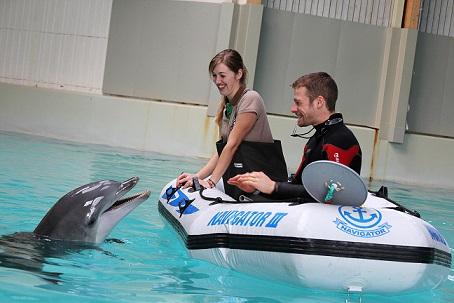The importance of acoustic enrichment in bottlenose dolphins (Tursiops truncatus) in human care.

A dolphin pool is often a very barren environment, with almost no objects or structures in the water column for the dolphins to explore. This can cause under-stimulation for an echolocating species like the bottlenose dolphin. During this project we provided the dolphin group in Kolmården Wildlife Park in Sweden with ten CPODs (Continuous Porpoise click Detectors; www.chelonia.co.uk) and two PCLs (Porpoise Click Loggers; AquaClick 100, www.aquatecgroup.com) as a way to enrich the dolphins environment, and to offer objects which will encourage the use of echolocation and that can be used by the dolphins as visual as well as acoustic landmarks for orientation.
The CPODs and PCLs were attached to the pool floor, with the hydrophone suspended 70-100 cm above the ground. Two cameras recorded the behaviour of the dolphins for 12 hours a day from above and underwater. The underwater camera documented the close interactions with some of the devices and the roof camera documented the movement patterns in relation to the geometry of the CPOD and PCL positions. Most click trains directed at the devices were recorded during the first introduction of the device and during investigative or play behaviours. A clear diel pattern in echolocation activity was recorded, where most clicks were recorded after midnight to early morning. During rest between 6PM and 00AM, the dolphins were swimming in rather stable loops in the half of the pool facing the underwater panels. Then the echolocation activity was the lowest, but still in more than half of these evening hours the dolphins may have used the PCLs as acoustic landmarks in 56-100% of the resting loops.
This finding suggests that for orientation at night in the pool, vision might be an alternative, with the exit lights around the pool providing enough light.
Responsible for this page:
Director of undergraduate studies Biology
Last updated:
06/19/15
